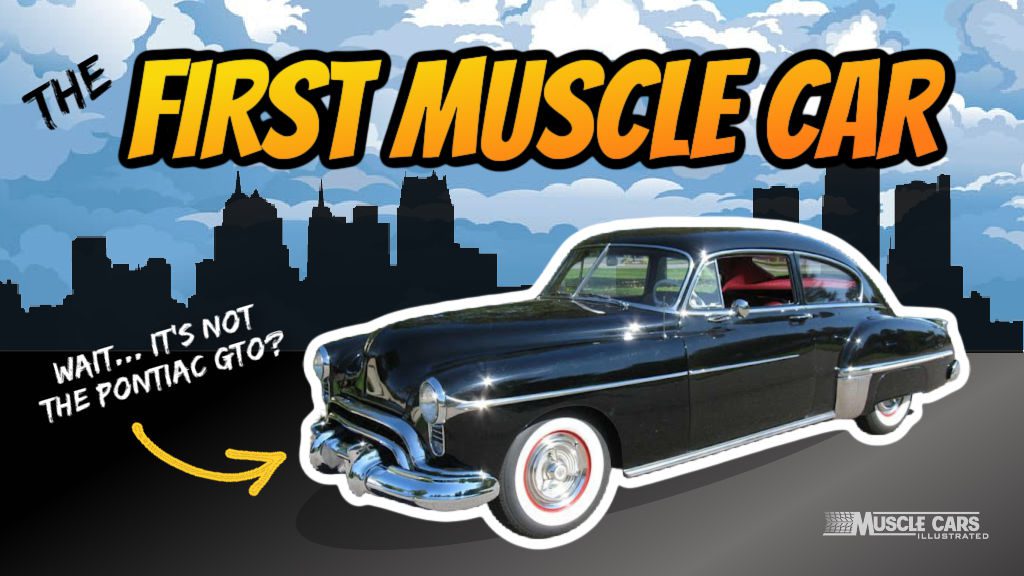
When you think of the first muscle car, you might instantly picture the 1964 Pontiac GTO.
While it’s often credited as the birth of the muscle car era, a lesser-known contender predates the GTO: the 1949 Oldsmobile Rocket 88.
In this post, we’ll explore why this innovative vehicle deserves the title of the first muscle car, delving deep into its history, design, and performance.
Table of Contents
Oldsmobile 88 History

The Oldsmobile 88 was first introduced in 1949 and quickly gained a reputation for its performance. Its unique formula—putting a big engine in a small car and offering it to the public at an affordable price—would later be replicated time and time again by muscle car manufacturers. The Rocket 88’s success laid the groundwork for the muscle car craze sweeping the nation in the 1960s and 1970s.
The Origins of the Oldsmobile 88
Oldsmobile, a division of General Motors, was known for its innovative designs and engineering prowess. The brand introduced the world to the fully automatic transmission with the 1940 Oldsmobile Hydra-Matic. Oldsmobile continued to push the envelope in automotive design throughout the 1940s.
The Oldsmobile 88 emerged from rapid innovation in the automotive industry, as post-World War II America was eager for new, exciting vehicles that represented the era’s optimism. Oldsmobile’s leadership recognized the need to create a high-performance car that would capture the public’s imagination and distinguish the brand from its competitors.
What is the First Muscle Car?
The 1949 Oldsmobile Rocket 88 is the first muscle car. Here are the top reasons why it is considered the first one:
- Powerful V8 engine: The Rocket 88 featured a powerful 303 cu in V8 engine that produced 135 hp and 283 lb-ft of torque, setting the standard for performance in the emerging muscle car segment.
- Lightweight, smaller body: By combining the V8 engine from the larger Oldsmobile 98 with the smaller and lighter body of the Oldsmobile 76, the Rocket 88 created a new formula for muscle cars: big engine, small car.
- Pioneering influence: The Rocket 88’s innovative combination of performance and practicality inspired other automakers to follow suit, leading to the birth of the muscle car era.
- Dominance in early NASCAR events: The Rocket 88’s impressive performance led to its success on the racetrack, winning eight out of ten races in the 1950 NASCAR season, further establishing its reputation as a high-performance vehicle.
- Cultural impact: The 88 had a significant impact on popular culture, inspiring one of the first Rock ‘N Roll songs, “Rocket 88” by Jackie Brenston and his Delta Cats, which celebrated the car’s speed and power.
These factors together showcase why the 1949 Oldsmobile Rocket 88 is recognized as the first muscle car, predating the more commonly associated 1964 Pontiac GTO.
1949 Oldsmobile Rocket 88
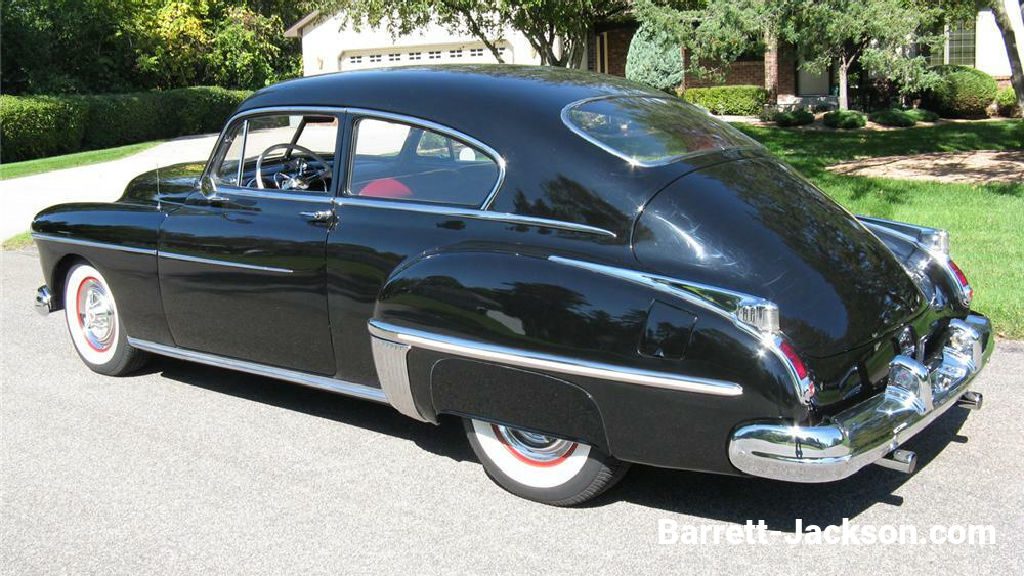
The 1949 Oldsmobile Rocket 88 boasted a powerful V8 engine in a smaller, lighter body. It combined the 303 cu in engine from the larger Oldsmobile 98 with the body from the six-cylinder Oldsmobile 76. The result? A car that captured the imagination of drivers and even inspired one of the first Rock ‘N Roll songs, “Rocket 88” by Jackie Brenston and his Delta Cats.
| 1949 Oldsmobile Rocket 88 | Details |
|---|---|
| Base Price | $1,741 ($22,079.68 today) |
| Number Built | 99,276 |
| Curb Weight | Approximately 3,600 lbs |
| Wheel Base | 119 inches |
| Body Length | 203.2 inches |
Appearance
The 1949 Rocket 88 featured modern post-war styling with a sleek, streamlined design. Compared to the larger 98 series cars of the time, the 88’s proportions were more modest at 202 inches long and 75.2 inches wide. The car’s smooth lines and rounded edges gave it an aerodynamic appearance that hinted at its high-performance capabilities. Chrome accents adorned the exterior, and the “Rocket 88” emblem was prominently displayed on the side panels, proudly showcasing the car’s powerful engine.
The Rocket 88 was available in several body styles, including a two-door sedan, two-door coupe, four-door sedan, and convertible. This range of options allowed buyers to choose the configuration that best suited their needs, whether looking for a family car with performance capabilities or a stylish, sporty convertible.
Interior
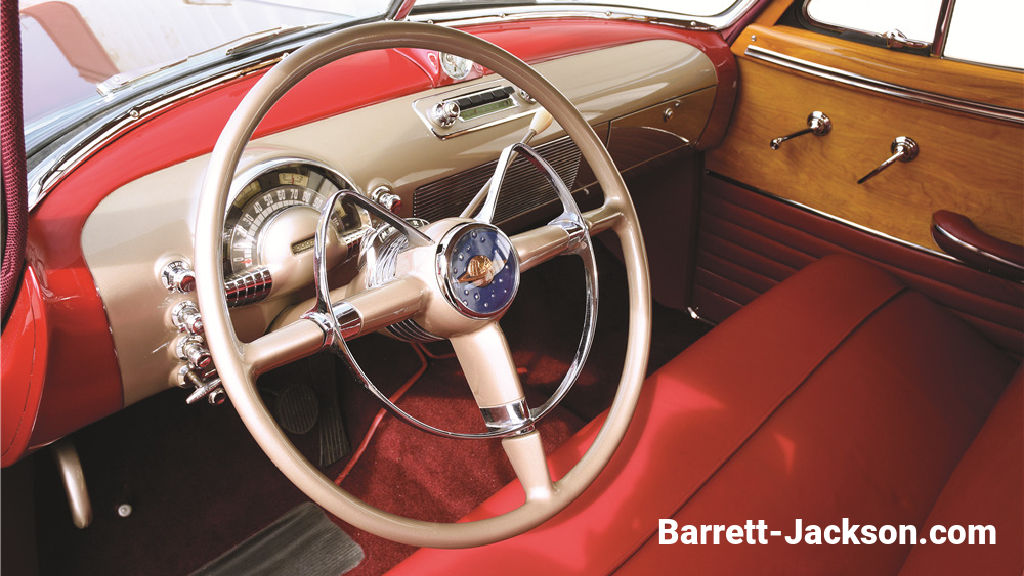
The Rocket 88’s interior was designed with comfort and convenience in mind. Bench seats provided ample passenger space, while the dashboard featured a simple, easy-to-read layout with a speedometer, fuel gauge, and temperature gauge. The optional deluxe trim package added chrome accents and a clock to the interior, creating a more luxurious feel.
One interesting aspect of the Rocket 88’s interior was the high cost of the optional radio. Adjusted for inflation, the $100 radio would cost $980 today. Despite the expense, many buyers opted for the radio, which is considered a must-have feature for the modern driver.
Engine Specs
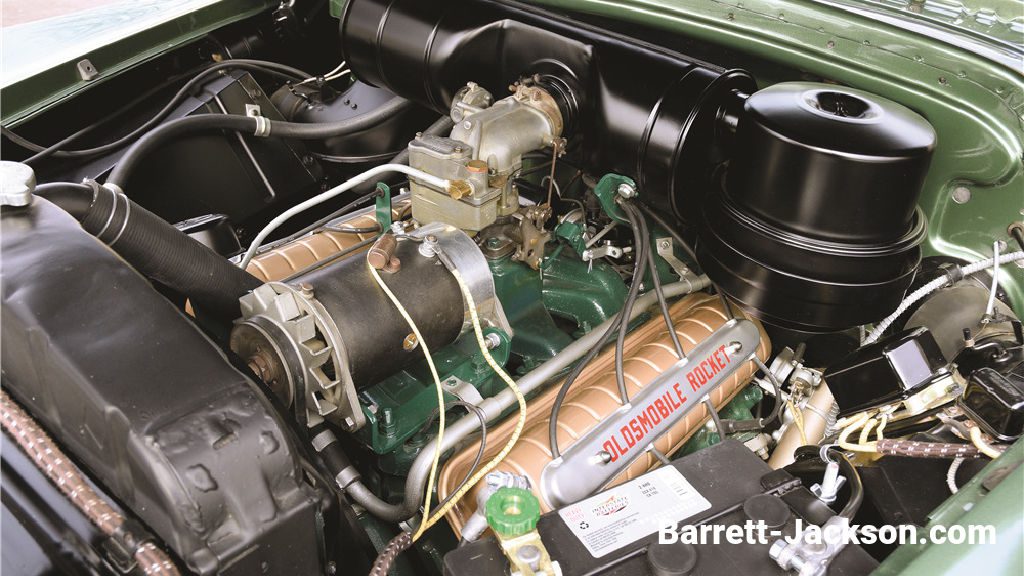
The engine design for the Rocket 88 came from GM’s chief researcher, Charles Kettering. His vision was an engine that offered increased compression, ultimately leading to a 303 cubic inch V8 capable of 135 hp and 283 lb-ft of torque. This innovative overhead valve engine concept provided power and efficiency, with an estimated 10% improvement in fuel economy over previous designs.
Kettering’s design paired a block-mounted cam, like a flathead, with top-mounted valves like an overhead cam (OHC) head operated by a series of pushrods. This created what we now call an “overhead valve” engine. GM eventually named Kettering’s engine “Rocket,” and the Rocket 88 was born.
| Engine Spec | Value |
|---|---|
| Displacement | 303 cu in |
| Horsepower | 135 hp |
| Torque | 283 lb-ft |
| Type | V8 |
| Compression | 7.25:1 |
| Bore | 3.75 in |
| Stroke | 3.4375 in |
Performance
The Rocket 88’s impressive performance included a top speed of 97 mph and a 0-60 mph time of 13 seconds. This gave it sports car performance in a straight line while still maintaining the practicality of a family car. In the 1950 NASCAR season, the Rocket 88 dominated, winning eight out of ten races. This impressive showing on the track further solidified the Rocket 88’s reputation as a high-performance machine.
As competitors began to introduce their own overhead valve engine designs in the mid-1950s, the Rocket 88 faced increased competition. However, its early success and innovative design had already secured its place in history as America’s first muscle car.
Rocket 88’s Impact on Popular Culture
The Rocket 88’s success didn’t go unnoticed, and it quickly became a cultural icon. It’s performance-inspired one of the first Rock ‘N Roll songs, “Rocket 88” by Jackie Brenston and his Delta Cats. The song’s lyrics celebrate the car’s speed and power, further cementing the Rocket 88’s place in history as a symbol of American ingenuity and performance.
Conclusion
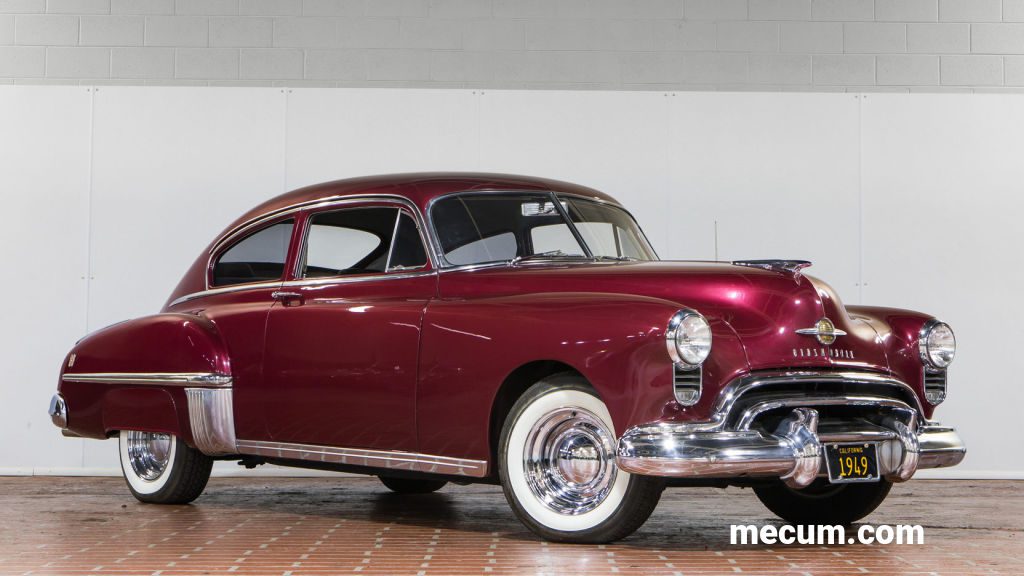
Though some might argue that the 1964 Pontiac GTO was the first muscle car, the 1949 Oldsmobile Rocket 88 deserves recognition as the true origin of the muscle car era. With its innovative engine design, modern styling, and impressive performance, the Rocket 88 set the stage for what would become an iconic segment in automotive history.
The 1949 Oldsmobile Rocket 88’s legacy extends beyond its racetrack performance or sales success. It represents a pioneering moment in automotive engineering and a symbol of post-war American optimism. Today, the Rocket 88 remains a cherished classic among car enthusiasts and as proof to the innovative spirit driving the automotive industry forward.
Ryan
Ryan has owned muscle cars since 1986 and currently owns a 1972 Dodge Charger Rallye. He combines passion and experience to create engaging content for fellow muscle car enthusiasts. In 2018, he founded Muscle Cars Illustrated, authoring hundreds of articles on tips, history, and trends in the muscle car industry. He attends national car shows, auctions, and museums to stay current with the latest developments in the muscle car industry.